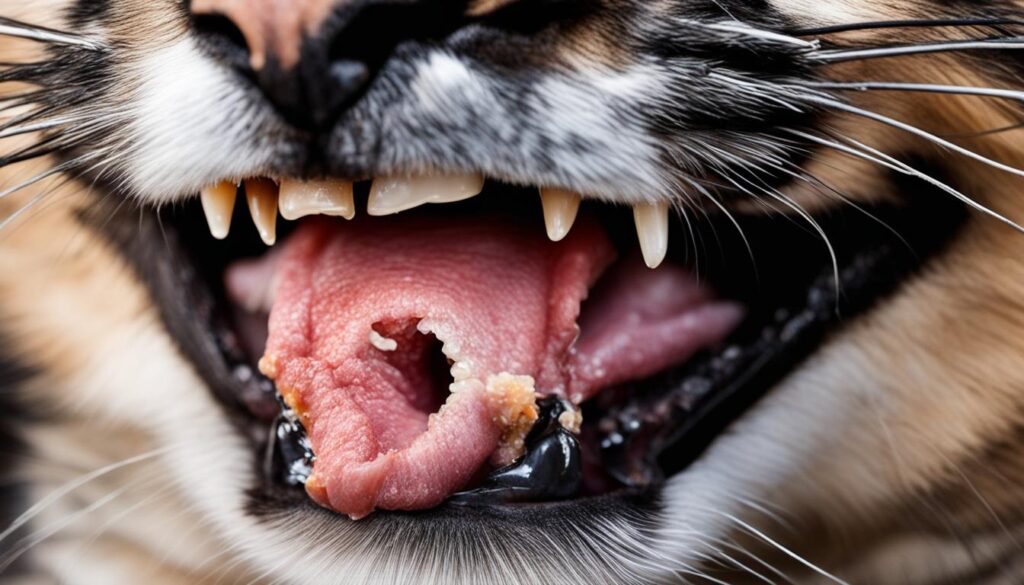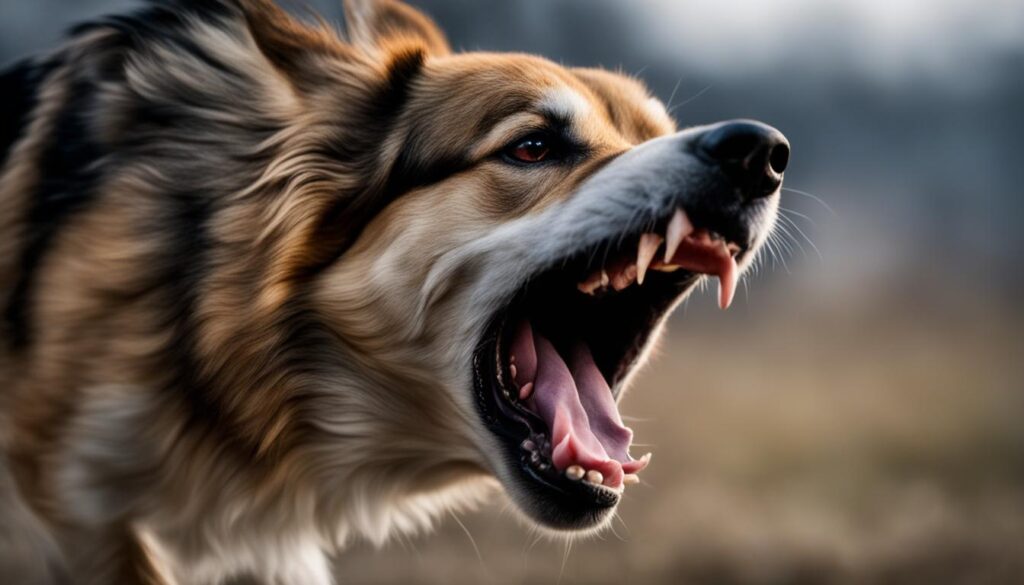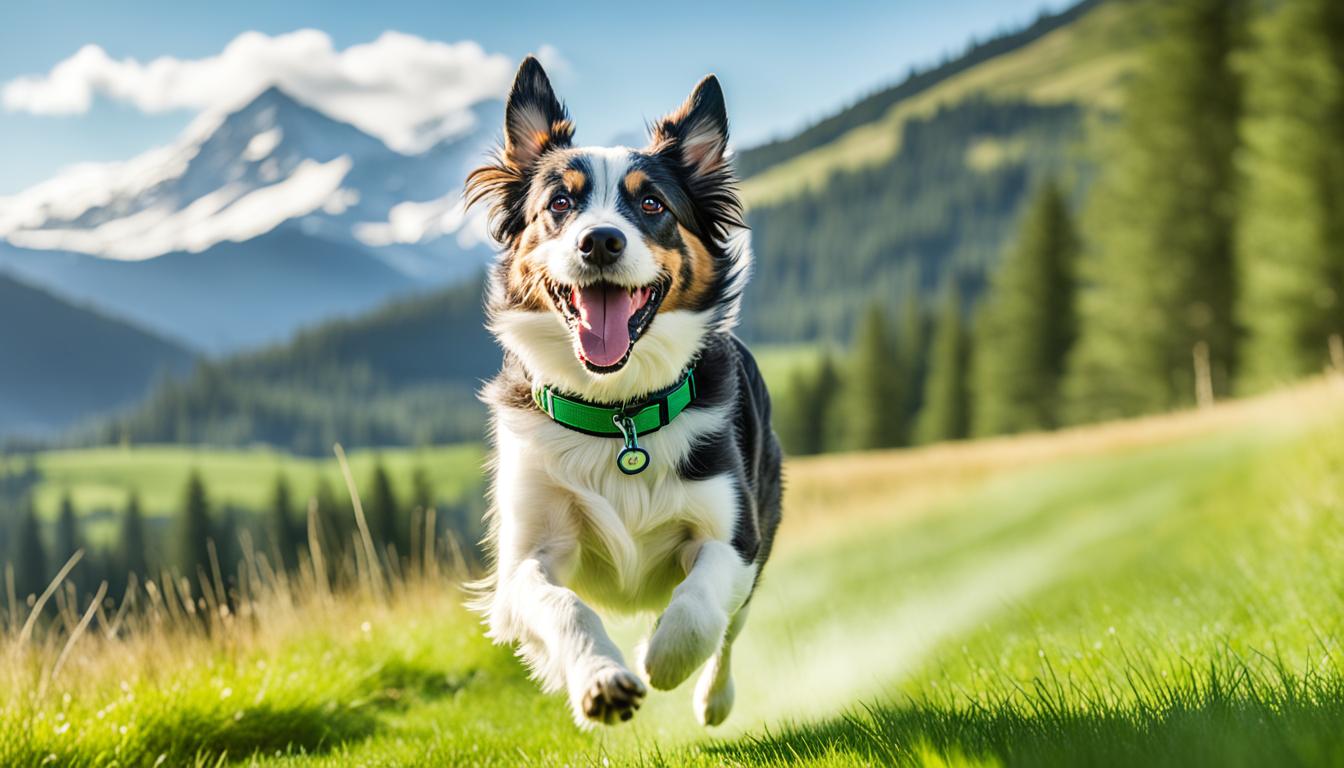As pet owners, we are committed to providing the best care for our furry friends. One crucial aspect of their well-being is recognizing early signs of illness. By being vigilant and proactive, we can detect potential health issues in our pets and take timely action to ensure their health and happiness.
In this comprehensive guide, we will explore various aspects of pet health and wellness. From behavioral changes to visual cues, from gastrointestinal symptoms to respiratory changes, we will cover it all. We will also discuss the importance of routine observations and adopting preventive pet healthcare strategies. By the end of this guide, you will have the knowledge and tools to recognize early signs of illness in your pets and provide them with the care they need.
So, let’s dive in and discover the many ways we can maintain and improve our pet’s health and wellness!
Key Takeaways:
- Recognizing early signs of illness in pets is crucial for their well-being.
- Behavioral changes, visual cues, and gastrointestinal and respiratory symptoms can indicate underlying health issues.
- Routine observations and preventive pet healthcare strategies are essential in maintaining pet health.
- Proper nutrition, exercise, grooming, dental care, and stress management contribute to overall pet wellness.
- Consulting with a veterinarian and seeking immediate veterinary attention for critical symptoms is vital.
Understanding Your Pet’s Normal Behavior for Early Illness Detection
Our pets have their own unique behaviors and routines, and any changes in their normal behavior could be a sign of underlying illness. It is important for us, as pet owners, to be observant and proactive in monitoring their behavior and recognizing any deviations from their usual patterns. By doing so, we can detect potential health issues early and take appropriate actions to ensure the well-being of our furry companions.
Identifying Behavioral Changes and What They Mean
Recognizing and understanding behavioral changes in our pets is crucial for early illness detection. Here are some common behavioral changes to watch out for:
- Increased aggression or unusual irritability
- Excessive lethargy or lack of energy
- Loss of appetite or sudden weight loss
- Changes in sleep patterns
- Increased vocalization or excessive barking
- Withdrawal or avoidance of social interaction
These behavioral changes can indicate a range of health issues, such as pain, digestive problems, anxiety, or even neurological disorders. It is important to consult with a veterinarian if you notice any significant changes in your pet’s behavior.
The Importance of Routine Observations in Pet Care
Routine observations of your pet’s behavior and well-being are key to detecting early signs of illness. By observing and documenting your pet’s behaviors, you can establish a baseline of their normal patterns and easily identify any deviations. Here are some tips for effective routine observations:
- Monitor eating and drinking habits: Keep an eye on your pet’s appetite and water intake. A sudden change in these behaviors may indicate an underlying health issue.
- Track bathroom habits: Note any changes in your pet’s urination or bowel movements, such as frequency, consistency, or signs of discomfort.
- Observe activity levels: Pay attention to your pet’s energy levels and activity patterns. A significant decrease in activity or unusual restlessness may warrant further investigation.
- Take note of grooming behaviors: Changes in grooming habits, such as excessive licking, chewing, or scratching, may be a sign of allergies, skin issues, or other health concerns.
- Monitor social interactions: Notice how your pet interacts with other animals or humans. Increased aggression, fearfulness, or withdrawal may indicate underlying stress or health problems.
By incorporating these routine observations into your pet care routine, you can develop a deeper understanding of their normal behaviors and quickly recognize any changes that may require veterinary attention.
Monitoring Eating and Drinking Habits as Health Indicators
The eating and drinking habits of your pet can serve as important indicators of their overall health. By closely observing their appetite and water consumption, you can gain valuable insights into their well-being. Changes in these habits may signal potential health issues, and it is crucial to be vigilant and proactive in addressing them.
When Appetite Changes Signal Trouble
Appetite changes in pets can be a red flag for underlying health problems. If your pet suddenly loses interest in food or exhibits a decreased appetite, it may be a sign of discomfort or illness. On the other hand, an increase in appetite or excessive food consumption might indicate an issue with your pet’s metabolism or nutritional needs. It is important to take note of any changes in appetite and consult with your veterinarian if you observe significant and consistent alterations.
Understanding the Risks of Altered Water Consumption
Water consumption is equally important for your pet’s health. Adequate hydration is vital for proper organ function, digestion, and overall well-being. If your pet starts drinking significantly more or less water than usual, it could be a cause for concern. Increased water consumption may indicate diabetes, kidney disease, or hyperthyroidism, while decreased water intake may lead to dehydration and other related complications. Monitoring your pet’s water consumption and seeking veterinary advice for any substantial changes can help prevent the risk of dehydration and ensure their well-being.
| Significant Increase in Water Consumption | Significant Decrease in Water Consumption |
|---|---|
|
|
The Subtle Art of Pet Health and Wellness Tips
Taking a holistic approach to pet care can greatly contribute to their overall health and wellness. By incorporating holistic pet care practices, you can ensure that your furry friend receives comprehensive and balanced care that addresses their physical, mental, and emotional well-being.
Integrating Holistic Approaches to Pet Care
When it comes to holistic pet care, it’s important to consider your pet’s diet, exercise, mental stimulation, and emotional support. By focusing on a whole-body approach, you can promote optimal health and prevent many common pet health issues. Here are some tips for integrating holistic approaches into your pet’s care:
- Choose natural and organic pet food that provides essential nutrients and avoids artificial additives and fillers.
- Incorporate regular exercise and physical activity into your pet’s routine to maintain their fitness and overall health.
- Provide mental stimulation through interactive toys, puzzles, and training exercises to keep your pet’s mind sharp.
- Create a calm and stress-free environment by offering a safe and comfortable space for your pet to relax.
By adopting these holistic pet care practices, you can enhance your pet’s quality of life and support their overall well-being.
Adopting Preventive Pet Healthcare Strategies
Preventive pet healthcare is essential for maintaining your pet’s health and catching any potential issues before they become severe. By implementing preventive measures, you can minimize the risk of illness and ensure that your pet stays happy and healthy. Here are some preventive pet healthcare strategies to consider:
- Regular visits to the veterinarian for check-ups and vaccinations.
- Maintaining a proper grooming routine, including regular brushing, nail trimming, and dental care.
- Providing proper nutrition to meet your pet’s specific dietary needs.
- Regularly examining your pet for any signs of illness or discomfort.
By taking a proactive approach to your pet’s healthcare, you can prevent many common pet health issues and increase their overall longevity and well-being.
Remember, every pet is unique, so it’s important to consult with your veterinarian for personalized advice and care for your beloved companion. By incorporating holistic approaches and preventive healthcare strategies into your pet’s daily life, you can ensure that they receive the best possible care and enjoy a happy and healthy life.

Visual Changes That Could Indicate a Problem
Visual cues can provide important insights into your pet’s overall health. By paying attention to changes in their appearance, you can potentially identify signs of illness early and take appropriate action. In this section, we will explore two key aspects of your pet’s visual health: their coat and skin, as well as their eye and ear health.
Signs of Illness in Your Pet’s Coat and Skin
Your pet’s coat and skin can offer valuable clues about their well-being. Changes in their fur texture, color, or overall appearance could indicate underlying health issues. Common signs of illness in your pet’s coat and skin include:
- Dullness or lackluster appearance
- Excessive shedding or hair loss
- Inflammation, redness, or rashes
- Dryness or flakiness
- Persistent itching or scratching
If you notice any of these visual changes in your pet, it is important to consult with your veterinarian for a thorough evaluation and appropriate treatment. Prompt action can help address any underlying health conditions and restore your pet’s coat and skin health.
Eye and Ear Health: What to Watch For
In addition to their coat and skin, your pet’s eyes and ears play a vital role in their overall well-being. Observing any abnormalities in their eyes or ears can alert you to potential health concerns. When it comes to eye health, watch out for:
- Redness or swelling
- Excessive tearing or discharge
- Cloudiness or changes in color
- Frequent blinking or squinting
For ear health, keep an eye out for:
- Ear discharge or odor
- Excessive scratching or shaking of the head
- Inflammation or redness
- Visible debris or wax buildup
If you notice any of these symptoms in your pet’s eyes or ears, it is crucial to seek veterinary attention. Early detection and treatment of eye and ear issues can help prevent further complications and discomfort for your pet.
Addressing Gastrointestinal Symptoms in Pets
Gastrointestinal symptoms can be concerning for pet owners. When our furry friends experience symptoms like vomiting and diarrhea, it’s important to understand their significance as indicators of illness. Both vomiting and diarrhea can be signs of gastrointestinal illness in pets, and they should not be taken lightly.
When your pet starts vomiting, it could be a sign of an underlying digestive issue. While occasional vomiting may not be a cause for immediate concern, persistent or frequent vomiting should be taken seriously. It could indicate gastrointestinal problems, such as infections, dietary issues, or even organ dysfunction.
Similarly, diarrhea in pets can also be a sign of digestive distress. If your pet has loose or watery stools, it may suggest an upset stomach, food intolerance, parasitic infection, or other digestive disorders. It’s important to monitor the frequency, consistency, and color of the diarrhea and seek veterinary attention if it persists or worsens.
As responsible pet owners, we need to know when to be concerned about our pet’s digestive issues. If your pet shows other symptoms along with vomiting or diarrhea, such as loss of appetite, lethargy, weight loss, or dehydration, it’s crucial to seek veterinary care. Additionally, if the vomiting or diarrhea is accompanied by blood or if your pet displays signs of severe discomfort, it’s important to seek immediate medical attention.
By understanding the significance of vomiting and diarrhea as illness indicators and knowing when to be concerned about your pet’s digestive issues, you can take appropriate steps to address their gastrointestinal health. Regular veterinary check-ups, proper nutrition, and a healthy lifestyle can go a long way in preventing and managing gastrointestinal illnesses in pets.

Respiratory Changes and When to Be Alarmed
Changes in your pet’s respiratory system can be an important indicator of underlying health issues. It is essential to understand the significance of respiratory changes and know when to be alarmed. By recognizing and addressing respiratory problems promptly, you can ensure your pet receives the necessary medical attention and appropriate care.
Deciphering Coughs and Wheezes
Coughing and wheezing are common respiratory symptoms in pets that should not be ignored. They can indicate various respiratory conditions, including infections, allergies, or even more serious issues such as heart problems or lung diseases. It is crucial to pay attention to the frequency, duration, and intensity of your pet’s coughs and wheezes. If you notice persistent or severe symptoms, it is best to consult with your veterinarian for a proper diagnosis and treatment.
Recognizing the Signs of Breathing Difficulties
Breathing difficulties are a serious concern and should be taken seriously. If you notice any of the following signs in your pet, it indicates that they are having difficulty breathing and require immediate veterinary attention:
- Rapid or shallow breathing
- Labored breathing or struggling to breathe
- Excessive panting
- Gasping for air
- Discoloration of gums or tongue
- Blue tint to the skin or mucous membranes
These symptoms could be an indication of various respiratory or cardiovascular conditions, such as pneumonia, asthma, or congestive heart failure. It is crucial not to delay veterinary care in respiratory emergencies, as these conditions can quickly worsen and become life-threatening if left untreated.
Remember, as pet owners, it is our responsibility to closely monitor our pets’ respiratory health. If you observe any changes, such as persistent coughs, wheezing, or signs of breathing difficulties, it is vital to consult with your veterinarian. By being vigilant and proactive, we can ensure our pets’ respiratory health and provide them with the care they need.
Assessing Mobility and Pain in Your Pet
Assessing your pet’s mobility and pain levels is crucial for their overall well-being. By monitoring their physical abilities and taking note of any signs of discomfort, you can provide them with the necessary care and support. In this section, we will explore the significance of limping, stiffness, and the need for veterinary attention when it comes to pet mobility and pain. We will also discuss how to understand your pet’s non-verbal cues of discomfort, as they often communicate their pain through subtle behaviors.
Limping, Stiffness, and the Need for Veterinary Attention
Limping and stiffness in your pet can indicate various underlying health issues. If you notice that your pet is favoring a particular leg or is having difficulty moving around, it might be a sign of pain or injury. It’s essential to consult with your veterinarian to determine the cause and appropriate treatment for your pet’s condition. Delaying veterinary attention can worsen your pet’s pain and potentially lead to long-term mobility problems.

Understanding Your Pet’s Non-Verbal Cues of Discomfort
Pets often exhibit non-verbal cues when they are experiencing pain or discomfort. These cues can include changes in posture, decreased activity levels, decreased appetite, restlessness, excessive grooming, or vocalizations. By observing and understanding your pet’s non-verbal cues, you can identify when they are in pain and take the necessary steps to provide them with relief. It’s important to seek veterinary advice to address your pet’s pain effectively and improve their overall well-being.
Behavioral and Cognitive Shifts That Require Attention
Behavioral and cognitive shifts in our pets can be indicators of various underlying issues that require our attention and care. It is crucial to recognize these changes early on to ensure the well-being and happiness of our furry companions. In this section, we will explore two key aspects of behavioral and cognitive shifts: assessing mood changes and identifying signs of cognitive decline.
Assessing Mood Changes and Aggressive Tendencies
One of the most noticeable behavioral changes in pets is their mood. Pets, like humans, can experience mood changes that may indicate something is amiss. It is important for pet owners to be observant and recognize these shifts in order to address them appropriately.
Mood changes in pets can manifest in various ways, including increased irritability, withdrawal, or excessive clinginess. Additionally, pets may exhibit aggressive tendencies towards both humans and other animals. These changes in behavior can be a result of stress, anxiety, pain, or underlying health issues. It is crucial to consider any external factors that may be causing these changes and consult with a veterinarian to address them effectively.

Identifying Signs of Cognitive Decline
Just like humans, pets can experience cognitive decline as they age. Cognitive decline can manifest in various ways, including confusion, disorientation, memory loss, and changes in their overall cognitive abilities. These changes can significantly impact a pet’s quality of life and require special attention and support.
Identifying signs of cognitive decline in pets is crucial for ensuring their well-being. Some common signs to look out for include increased forgetfulness, difficulty recognizing familiar people or places, decreased problem-solving abilities, and changes in their sleep patterns. Regular check-ups with a veterinarian can help assess your pet’s cognitive health and determine the best course of action to support them.
By addressing these behavioral and cognitive shifts, pet owners can proactively care for their pets’ mental well-being. Being responsive to these changes and seeking appropriate support can help maintain a harmonious and fulfilling relationship with our furry friends.
| Signs of Behavioral Changes | Signs of Cognitive Decline |
|---|---|
|
|
Immediate Veterinary Actions for Critical Symptoms
Knowing how to respond to critical symptoms in pets is crucial for their survival. In this section, we will discuss the kinds of emergencies that require immediate veterinary attention and when to rush to the vet. We will also provide guidance on preparing for urgent pet healthcare situations and having a plan in place. By being prepared and acting promptly, you can potentially save your pet’s life in critical situations.
Kinds of Emergencies: When to Rush to the Vet
In certain situations, it is imperative to seek immediate veterinary care for your pet. Here are some critical symptoms that require prompt attention:
- Difficulty breathing or choking
- Severe bleeding
- Unconsciousness or inability to wake up
- Continuous seizures
- Severe pain or injury
- Ingestion of toxic substances or foreign objects
- Sudden collapse or weakness
- Signs of heatstroke or hypothermia
- Severe vomiting or diarrhea
- Difficulty urinating or defecating
- Abnormal behavior or disorientation
- Any other sudden and severe changes in your pet’s condition
If you notice any of these symptoms, it is crucial to contact your veterinarian immediately or go directly to an emergency veterinary clinic. Time is of the essence when it comes to critical situations, and swift action can significantly improve the chances of a positive outcome for your pet.
Preparing for Urgent Pet Healthcare Situations
Being prepared for pet healthcare emergencies can make all the difference in providing effective and efficient care. Here are some steps you can take to prepare for urgent situations:
- Save emergency contact information: Keep your regular veterinarian’s phone number and the nearest emergency veterinary clinic’s contact information easily accessible. You can save these numbers in your phone, write them down, or keep them in a prominent place in your home.
- Assemble a pet first aid kit: Create a pet first aid kit and keep it readily available. Include items such as bandages, gauze, antiseptic solution, tweezers, and a digital thermometer. Familiarize yourself with how to use these supplies appropriately.
- Research emergency veterinary clinics: Find out the closest emergency veterinary clinics in your area and familiarize yourself with their operating hours and procedures. It is essential to have this information handy in case of an emergency outside of regular veterinary clinic hours.
- Have a plan for transportation: Ensure you have a safe and reliable method of transportation to take your pet to the veterinary clinic in case of an emergency. Keep your car keys easily accessible and ensure your vehicle is in good working condition.
- Stay calm and act quickly: In an emergency, it is crucial to remain calm and assess the situation carefully. Contact your veterinarian or emergency clinic immediately, provide them with clear and concise information about your pet’s condition, and follow their instructions.
By taking these steps to prepare for pet healthcare emergencies, you can provide your pet with the best chances of receiving timely and effective care when it matters most.
Conclusion
Recognizing early signs of illness in your pets is essential for their well-being. Throughout this guide, we have explored various aspects of pet health and wellness, providing valuable insights and practical tips to help you maintain your pet’s well-being.
By remaining vigilant and proactive in your pet’s healthcare, you can ensure early detection and prompt treatment of any potential health issues. Whether it’s recognizing behavioral changes, monitoring eating and drinking habits, observing visual cues, addressing gastrointestinal symptoms, or understanding respiratory changes and mobility issues, your attentiveness will play a crucial role in your pet’s health.
Additionally, we have discussed immediate veterinary actions for critical symptoms and the importance of routine observations, holistic approaches, and preventive healthcare strategies. These insights, coupled with regular consultations with your veterinarian, will help you tailor your pet’s care to their specific needs.
Let us continue to prioritize our furry friends’ health and well-being. By recognizing early signs of illness, implementing proactive healthcare strategies, and consulting with professionals, we can ensure that our beloved pets live healthy and thriving lives by our side.
FAQ
What are some signs of illness in pets that I should be aware of?
Signs of illness in pets can vary, but some common indicators include changes in behavior, appetite, water consumption, coat and skin appearance, respiratory patterns, mobility, and cognition. It’s important to stay vigilant and observe any abnormal changes in your pet’s overall health.
How can I recognize behavioral changes in my pet?
Behavioral changes can manifest in various ways, such as increased aggression, excessive grooming, lethargy, or changes in social interaction. By being attentive to your pet’s behavior and noticing any deviations from normal patterns, you can identify potential health issues.
What should I do if my pet’s appetite changes?
If your pet experiences a sudden decrease or increase in appetite, it could be a sign of an underlying health issue. Monitor their eating habits, note any accompanying symptoms, and consult with your veterinarian for guidance.
How can I integrate holistic approaches into my pet’s healthcare routine?
Holistic pet care involves considering your pet’s physical, mental, and emotional well-being. You can incorporate natural remedies, essential oils, balanced nutrition, regular exercise, and mental stimulation into their routine. Consulting with a holistic veterinarian can provide you with personalized advice for your pet’s specific needs.
What are some visual cues that could indicate a problem in my pet?
Changes in coat and skin appearance, such as dullness, excessive shedding, or redness, can be indicators of health concerns. Additionally, abnormalities in your pet’s eyes or ears, such as discharge or redness, should be monitored and addressed by a veterinarian.
When should I be concerned about my pet’s vomiting and diarrhea?
Vomiting and diarrhea can occur due to various reasons, but if they persist for more than 24-48 hours, are accompanied by other concerning symptoms, or if your pet becomes lethargic or shows signs of dehydration, it’s important to seek veterinary attention.
How can I recognize respiratory changes in my pet?
Pay attention to coughing, wheezing, labored breathing, or changes in respiratory rates in your pet. If you notice any significant alterations in their respiratory patterns, consult with your veterinarian to rule out any underlying respiratory issues.
What should I do if my pet is limping or experiencing stiffness?
Persistent limping or stiffness can indicate pain or mobility issues. It’s important to seek veterinary attention to identify the cause and implement appropriate treatment options to relieve your pet’s discomfort.
How can I address behavioral and cognitive shifts in my pet?
If your pet exhibits sudden mood changes, aggression, or signs of cognitive decline, engaging in positive reinforcement training, providing mental stimulation, and consulting with your veterinarian can help address these shifts and support your pet’s mental well-being.
When should I seek immediate veterinary attention for my pet?
Critical symptoms requiring immediate vet attention include severe bleeding, difficulty breathing, loss of consciousness, seizures, trauma, sudden paralysis, or ingestion of toxins. Contact your veterinarian or emergency veterinary clinic immediately in these cases.
How can I prepare for urgent pet healthcare situations?
It’s crucial to have an emergency plan in place. Keep your veterinarian’s contact information easily accessible and familiarize yourself with the nearest emergency veterinary clinic. Additionally, having a pet first-aid kit and knowing basic first-aid techniques can be beneficial in emergency situations.
Source Links
- https://www.akcpetinsurance.com/blog/5-common-signs-that-your-dog-is-sick
- https://birminghamanimalhospital.com/warning-signs-that-indicate-dog/
- https://www.wfla.com/bloom-tampa-bay/spotting-the-signs-how-to-tell-if-your-pet-is-sick/

